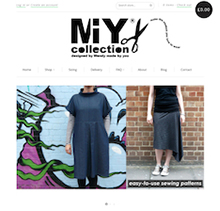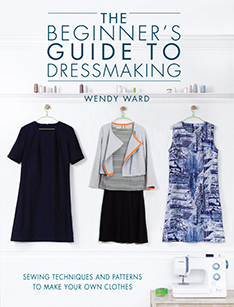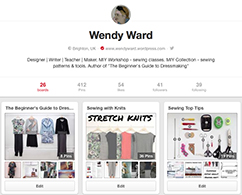Tag Archives: sheffield
2020 Sewing Classes & Workshops in Sheffield
Posted in Sew In The City (Sheffield) Classes, Sewing Classes
Tagged derwent trousers workshop, handmade happy hare, how to use a sewing machine, kinder cardigan workshop, make a t-shirt workshop, sew in the city, Sewing Classes, sewing classes in sheffield, sewing workshops, sheffield, weekly sewing classes, Wendy Ward
New Sewing Classes in Sheffield
Well hello, it’s been a while hasn’t it?!
I hinted that I might be doing more sewing classes again once I’d moved to Sheffield and here are my first two workshops now open for booking at Sew In The City (contact Sew In The City direct to book your place, use the link in the class description below):
Two New Workshops in Sheffield
Make a Roewood Jersey Skirt in Sheffield
Posted in Beginner's Guide to Making Skirts, Books by Wendy, Other Events & Workshops
Tagged beginners guide to skirts, dressmaking workshop, how to make a skirt, jersey pencil skirt, roewood skirt, running with scissors, sewing classes sheffield, sheffield, skirt making class, skirt making workshop, Wendy Ward
Fulwood Dresses, Brightside Shrugs & Shared Nostalgia for Sheffield
Kate Brookes is a sewing blogger based in Sydney Australia, but she’s originally from…..yes, you guessed it, Sheffield!! All good things come from Sheffield!
So, inevitably Kate and I occasionally reminisce about all things Sheffield online and I was chuffed when she recently chose to buy my Fulwood Dress and Brightside Shrug patterns.
She’s now written a lovely review of them which includes some Sheffield nostalgia, sewing, squeezing a pint out of a half pint pot (in fabric terms) and inspiring one of her 11 year old sewing students to also make a Brightside Shrug!
It’s a great read, have a look.
Posted in Brightside Pattern, Fulwood Pattern, Sewing Patterns by Wendy
Tagged Brightside shrug, easy sewing patterns, fulwood dress, indie sewing patterns, MIY collection, MIYbrightside, miyfulwood, pdf sewing patterns, sewing patterns for knits, Sewing With Kate, Sewing With Knits, sheffield, Wendy Ward
A Visit to Ernest Wright & Son Ltd – Sheffield Scissor Makers
Sheffield has been a centre for manufacturing various forms of “blades” since the 14th century thanks to the many hills, valleys and rivers powering its industry. Stainless steel was actually invented in Sheffield and you’ll still find a large percentage of your cutlery will proudly state “Made in Sheffield”.
Ernest Wright is one of the last remaining traditional scissor manufacturers in Sheffield and is a family run business that has been hand making scissors since 1902. As a Yorkshire lass who hails from Sheffield aka the “Steel City” and home of the scissor, I was really happy to meet Nick Wright of Ernest Wright Ltd at the Knitting & Stitching show at Alexandra Palace in October. The original Ernest Wright was Nick’s great grandfather. I kept Nick chatting for far too long at the show and he invited me to go and have a look around the factory the next time I was in town. So, recently I was in Sheffield and finally went for that long overdue visit. Here’s what I found….
 The factory is on Broad Lane in central Sheffield and if you look up you won’t miss it!
The factory is on Broad Lane in central Sheffield and if you look up you won’t miss it!
 A big thank you to Nick and Pam for being so welcoming and letting us take up precious time in their day. Pam wasn’t even supposed to be there, she came in specially to meet us!
A big thank you to Nick and Pam for being so welcoming and letting us take up precious time in their day. Pam wasn’t even supposed to be there, she came in specially to meet us!
 I knew my dad would find it an interesting place, so I took him along too!
I knew my dad would find it an interesting place, so I took him along too!


 As soon as you walk through the door there’s no shortage of scissors….
As soon as you walk through the door there’s no shortage of scissors….
OK, so down to the nitty gritty,
HOW ARE THESE THINGS MADE?!
Let’s start with a quick whistlestop tour of a pair of scissors:
 Screenshot image from Little Less Known’s brilliant film of the Ernest Wright factory.
Screenshot image from Little Less Known’s brilliant film of the Ernest Wright factory.
When are scissors called shears? This is a question I have been pondering as fabric scissors are often called Dressmaking, Fabric or Tailor’s Shears. Well, apparently when scissors are bigger than 15cm they become shears!
All Ernest Wright scissors (and shears!) start with a forged Sheffield steel “blank”:
a kind of rough and ready scissor shape that needs to be refined.
The first step in achieving this is……  ….the rumbler! Where the scissor blades are rattled around with tiny super hard pebbles (of I forget what material!) overnight to remove the rougher parts from the blanks. Next, a bit of grinding is required, first by machine:
….the rumbler! Where the scissor blades are rattled around with tiny super hard pebbles (of I forget what material!) overnight to remove the rougher parts from the blanks. Next, a bit of grinding is required, first by machine:
 and a scary looking machine it is too!
and a scary looking machine it is too!
 But look at that for a before and after pic!
But look at that for a before and after pic!
After the machine grinding, some finer grinding is done by hand:
These grinding wheels literally get ground down over time and shrink in diameter. This process puts the sharp cutting edge onto the blades.
Every part of the scissors is hand worked, including the insides of the handles (or bows):
The last stage of the process lies with the “Putter”. The job of the Putter is extremely skilled and it actually means the “putter-togetherer” ie. the person who finally assembles the scissors.
Here’s Cliff, Ernest Wright’s most charming of Putters:
 Who also happens to be an amazing story-teller!
Who also happens to be an amazing story-teller!
Cliff’s job involves assembling the scissors and hammering the perfect curve onto each scissor blade. I’ve made that sound way easier than it is – it’s a highly skilled job which takes years of training to master and watching Cliff work is an absolute pleasure. You can also watch him in this film by Shaun Bloodworth.
 Me and my dad with the lovely Cliff.
Me and my dad with the lovely Cliff.
 Cliff’s hammer, worn down over the years to fit his thumb and the precise angle at which he works. I love tools like this that tell their own story in the marks left by the craftsperson using it.
Cliff’s hammer, worn down over the years to fit his thumb and the precise angle at which he works. I love tools like this that tell their own story in the marks left by the craftsperson using it.
The curve and the setting of the blades by the Putter are what gives handcrafted scissors the ability to cut along the full length of the blade, forever. When the scissors are assembled they are slightly sprung against each other and if you hold your scissors up to the light you should be able to see a gap between the blades along the length with the tips tightly touching. Only machine made scissors have perfectly straight blades without a gap and they won’t cut at the tips for long once you start to use them.
I’m super proud to be stocking Ernest Wright & Son scissors. If you fancy your very own pair for life, here’s what I’ve got in stock at the moment:
 8 inch Tailor’s Shears with comfortable angled handles to allow nice flat cutting. These shears measure 8″ in total including the handles. Right handed. £40
8 inch Tailor’s Shears with comfortable angled handles to allow nice flat cutting. These shears measure 8″ in total including the handles. Right handed. £40
 10 inch Tailor’s Shears with comfortable angled handles to allow nice flat cutting. These shears measure 10″ in total including the handles. Right handed. £60
10 inch Tailor’s Shears with comfortable angled handles to allow nice flat cutting. These shears measure 10″ in total including the handles. Right handed. £60
 Super sharp embroidery scissors with large bow (handles) making them really comfortable to use. These scissors measure 3.75″ in total including the handles. The ideal thread snips for dressmakers. £24
Super sharp embroidery scissors with large bow (handles) making them really comfortable to use. These scissors measure 3.75″ in total including the handles. The ideal thread snips for dressmakers. £24
 Wonderful duck-billed scissors variously called Napping or Appliqué scissors. The large blade underneath and the angled handles make these scissors perfect for trimming around appliqué or machine embroidery and for layering and trimming seam allowances without accidentally chopping a hole in your garment! £29
Wonderful duck-billed scissors variously called Napping or Appliqué scissors. The large blade underneath and the angled handles make these scissors perfect for trimming around appliqué or machine embroidery and for layering and trimming seam allowances without accidentally chopping a hole in your garment! £29
These scissors and shears are only available in person at MIY Workshop, they won’t be going into my online shop and I won’t be able to do them through the post. If you would like a pair, give me a ring at the workshop on 01273 693451 email me on miyworkshop@gmail.com or pop in to MIY Workshop at 33 North Road in the North Laine area of Brighton, just up the hill from Infinity Foods.
Not content with having a look around his factory I asked Nick if I could interview him about how you should look after your new scissors. Gent that he is he agreed and I’ll be posting the results soon.
Olympic Design
All this current Olympic malarky has reminded me of the final project I did for my A-level in Dress (which I think is now extinct as a qualification) many moons ago.
As Sheffield had hosted the World Student Games that year, it became the focus for my project.
 Yes I was a girl who loved to draw stylised super skinny fashion illustrations for my designs, liked the old coloured pencils and wanted to have everything “just so”!
Yes I was a girl who loved to draw stylised super skinny fashion illustrations for my designs, liked the old coloured pencils and wanted to have everything “just so”!
Well even though I was only 18 it wasn’t just drawing pretty pictures, we had to make the damn things too – including drafting our own patterns, after learning pattern cutting for only two years.
 salopettes with a quilted bib pocket (yes I quilted it myself too!)….
salopettes with a quilted bib pocket (yes I quilted it myself too!)….
 and an all-in-one with top-stitched shaped panel seams.
and an all-in-one with top-stitched shaped panel seams.
Speaking of students and teachers, I believe I owe a lot of where I am now to two very influential teachers of mine.
The first was Miss Cross, my textiles teacher at secondary school. She was an inspiration to me, allowing her pupils to make such a varied range of things in our classes from Care Bears to knitted wall hangings! She had incredibly high standards and expectations and ‘good enough’, was never enough for her. A great grounding for any student. Watching her work always amazed me; fabrics seemed to be under a spell at her finger tips and she made the most fiddly things look easy. She then did me a massive favour by finding me the ideal A-level to enable me to continue in textiles and handed me over to Mary Braddock at Granville College in Sheffield. Mary introduced me to pattern cutting and taught it in such a way that anything seemed possible. I’ve loved it ever since and never come across a better teacher.

































